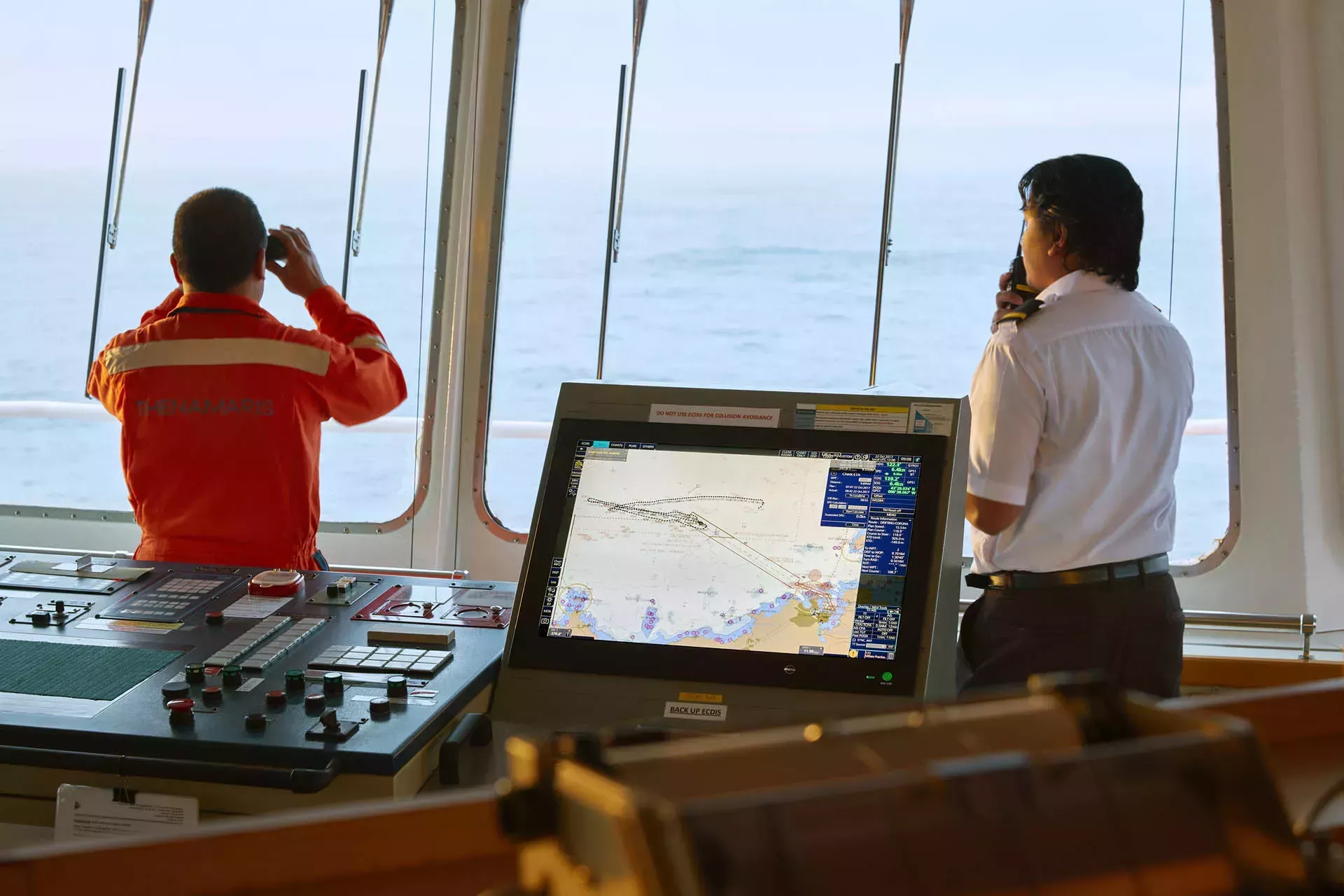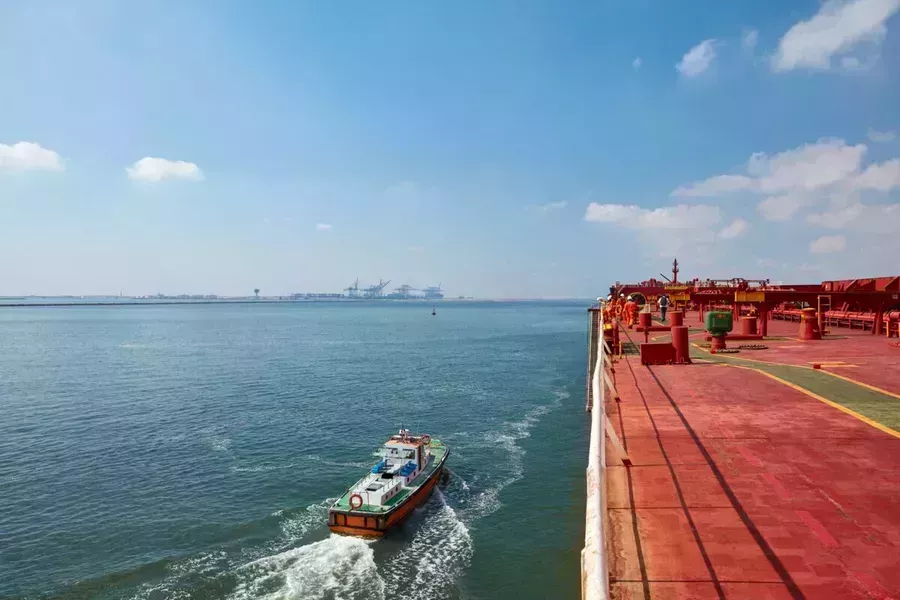
The use of Electronic Chart Display and Information Systems (ECDIS) is mandated by the IMO due to the many safety benefits they bring; these include automatic updating, route verification and automatic alerts – to name a few. But, to fully realise the potential of ECDIS, bridge teams must be confident in using these systems. This means being able to configure the system's safety settings, being able to interpret the ENC symbology, and being able to understand how different ECDIS settings will affect ENC display.
This can sound like a list of fundamentals, but achieving these things can be become difficult when mariners are under pressure: whether operating in bad weather or facing busy and intricate approaches, as well as the many other factors teams can face at sea.
Therefore, it's important that bridge teams undertake regular ENC and ECDIS familiarisation training so that they have refreshed and up-to-date knowledge that can be easily recalled in both calm and challenging situations.
Investigating recent vessel groundings
As the Chairman of the IHO's ENC Standards Maintenance Working Group, it's my responsibility to lead development and maintenance of all IHO standards, enforcing which apply to ENC production, security and data display in ECDIS. Part of this task involves assessing accident reports of vessel groundings. These reports not only highlight safety issues related to the use of ENCs or ECDIS, but also allow us to identify possible shortcomings in IHO technical standards which may need investigation or immediate correction.
Two recent accident reports have caught my attention; one from the Australian Transport Safety Bureau on the grounding of Australian Border Force cutter Roebuck Bay, and another from the Federal Bureau of Maritime Casualty Investigation on the grounding of motor tanker Pazifik.
Both reports highlighted a common issue: the navigating officers had either misinterpreted the chart symbology or believed that the 'Isolated Danger' symbol wasn't a hazard to their vessel.
Understanding ENC symbology
The 'Isolated Danger' symbol is displayed in ECDIS using a conspicuous magenta octagon symbol, as shown below:
|
The 'Isolated Danger' symbol is displayed in ECDIS using a conspicuous magenta octagon symbol |

|
This represents obstructions, rocks or wrecks with a depth value of less than the mariner-defined safety contour and which lie within the safe waters defined by the safety contour. This symbol can be used on point, line and area features if they pose a danger to the vessel.
IHO S-52 Presentation Library Edition 4.0 requires that ECDIS have an additional function to highlight all isolated dangers that fall in the unsafe water behind the safety contour, as experience has shown that vessels often have to cross the safety contour when navigating in confined waters.
As the aforementioned reports have shown, the importance of recognising and understanding the significance of the 'Isolated Danger' symbol cannot be underestimated. It's vital that navigators have a clear understanding of all the symbology used to display ENC data, as well as the ability to accurately interpret the display of that data in ECDIS.
If mariners are not familiar with any ENC symbols in use within the ECDIS display, ECDIS Chart 1 (a legend of the entire set of symbols that may be used within an ENC) is installed on all type-approved systems.
The importance of familiarisation training
Like the recommendations in the reports I have read, I believe the key to improving this situation lies in regular ECDIS and ENC familiarisation training, combined with auditing to ensure its effectiveness.
By having regular refresher training, mariners will be able to realise the full safety benefits of ECDIS and recall important information in times of stress and pressure. In addition to this, carrying out regular familiarisation training will also support international requirements with which shipping companies have to comply, including the International Safety Management (ISM) Code and the International Convention on Standards of Training, Certification and Watchkeeping (STCW).
In February 2017, the IMO made important clarifications on training requirements for ECDIS, stating that seafarers are not required to provide documentary evidence of familiarisation training but that companies are still responsible for ensuring all seafarers employed on their ships are familiarised with ECDIS.
Here at the UK Hydrographic Office (UKHO), we have developed many publications, in both digital and paper format, that can help you to carry out this familiarisation:
-
ADMIRALTY ENC and ECDIS Maintenance Record (NP133C) - Includes checklists designed to document and evidence that ECDIS familiarisation training has been completed, thus helping to ensure evidence can be provided during Port State Control inspections.
-
ADMIRALTY Guide to the Practical Use of ENCs (NP231) – A reference guide designed to help bridge crews, trainers and those responsible for risk and safety management to gain an understanding of practical ENC use. Divided into seven chapters, content includes information on the construction of an ENC, the influence of ECDIS display settings and how they can be optimised.
-
ADMIRALTY Guide to Implementation, Policy and Procedures (NP232) - Guidance on the efficient integration of ECDIS across fleets, with clear information to help fleet managers to adopt ECDIS efficiently and ensure ECDIS implementation is fit for purpose. Content also includes guidance on ECDIS policies and procedures to assist crews, fleet managers and those involved in the development of detailed ECDIS operating procedures to ensure ECDIS is adequately covered.
-
ADMIRALTY Guide to ENC symbols used in ECDIS (NP5012) - Offers detailed explanations and descriptions of both traditional and simplified forms of ENC symbols displayed in ECDIS, ensuring bridge crews possess the knowledge needed to navigate safely.
By Thomas Mellor, the Head of OEM Technical Support and Digital Standards at the UKHO.



